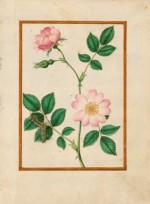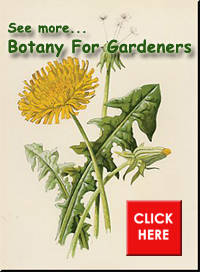 All botanical names consist of at least two parts, a genus and species names. So, lily of the valley is known as Convallaria majalis, and Norway maple is Acer plantaoides. Sometimes, however, the name of a plant has three names, genus species, and cultivar or variety. Thus, a certain garden phlox is Phlox paniculata ‘Bright Eyes’, and a certain common boxwood is Buxus sempervirens var. pendula. Sure, there are similarities in the cultivar and variety names but there are also some significant differences.
All botanical names consist of at least two parts, a genus and species names. So, lily of the valley is known as Convallaria majalis, and Norway maple is Acer plantaoides. Sometimes, however, the name of a plant has three names, genus species, and cultivar or variety. Thus, a certain garden phlox is Phlox paniculata ‘Bright Eyes’, and a certain common boxwood is Buxus sempervirens var. pendula. Sure, there are similarities in the cultivar and variety names but there are also some significant differences.
The difference between cultivars and varieties is one of origin. In simple terms a variety is a type of plant that arose in nature while a cultivar is the result human intervention. The human intervention may be slight such as just collecting the plant or its seeds but the existence of the plant is due to human effort. The term cultivar is especially useful to horticulturalists in their need to produce and market new (and hopefully better) plants.
Of course, the written words requires certain rules for writing the name of cultivars so that they are distinguished from varieties. Lets go back to two of the examples above:
Phlox paniculata ‘David’ (a tall white, mildew resistant garden phlox)
Buxus sempervirens var. pendula (a weeping boxwood)
These two plants share the characteristic of having their genus (Phlox, Buxus) and species (paniculata, sempervirens) in Latin.
They differ, however, in a couple of significant ways:
Phlox’s 3rd name is in English, capitalized and in single quotes
Buxus’ 3rd name is in Latin, is not in quotes, is not capitalized and is preceded by the abbreviation var. standing for the word variety.
So, here are the rules.
Cultivar names are:
 in the vernacular, often English (frequently the name of a person but can be just about anything.)
in the vernacular, often English (frequently the name of a person but can be just about anything.)
 capitalized
capitalized
 put in single quotes
put in single quotes
Variety names are:
 in Latin (often suggesting the unique characteristic of the cultivar; sometimes a name.)
in Latin (often suggesting the unique characteristic of the cultivar; sometimes a name.)
 not in quotes
not in quotes
 preceded by the abbreviation var.
preceded by the abbreviation var.
This means that most of the names you know for roses, like ‘Easy Does It’ are not variety name but cultivar names. The same is true for daylilies and hosta. ‘Granny Smith’ and ‘Red Delicious’ are the cultivar names of apples, while ‘Big Boy’ and ‘Early Girl’ are cultivar name of tomatoes. If you are getting the idea that cultivar names are more common than variety names, you are right to a certain extent. Plant breeders are working big time coming up with new cultivars to meet your wants and needs so they add more and more cultivars each year and the nurseries and gardening catalogs reflect that.
Sounds simple and straight forward but of course it is not. Here are some examples of major snafus. Diamond Frost, in the name Diamond Frost Euphorbia (a popular container plant), sounds like a cultivar name but isn’t. It is a trade name. The cultivar name is actually ‘Inneuphe’ but very few people know about it or use it and call it Diamond Frost as though it is the cultivar name. Another more confusing snuf arises from the date on which the cultivar name was assigned. Some plants received their 3rd name before the rules became established and they have a sort of hybrid name that is a mix between present day variety and cultivar conventions. An example is ornamental rhubarb. Its botanical name is Rheum palmatum ‘Atrosanguineum’ but ‘Atrosanguineum’ is in Latin, capitalized and in single quotes, so is it a cultivar name or a variety? Before 1959 Latin was used for cultivar names as well as variety names and so ‘Atrosanguineum’ is a cultivar name in this case even though it is in Latin. Most Latin names that are capitalized and in single quotes are cultivars predating 1959.
 You may also see double quotes used and cv. before a cultivar name but they are no longer considered correct form. Foreign plants may have cultivar names in a foreign language, that is OK; the convention specifies that cultivar names be in the vernacular so its English for us but the spoken language for others. (I suppose the few people that still speak a form of Latin could get away with a Latin cultivar name. Interesting thought.)
You may also see double quotes used and cv. before a cultivar name but they are no longer considered correct form. Foreign plants may have cultivar names in a foreign language, that is OK; the convention specifies that cultivar names be in the vernacular so its English for us but the spoken language for others. (I suppose the few people that still speak a form of Latin could get away with a Latin cultivar name. Interesting thought.)
If the exceptions and complexities are overload, just forget them since you will probably never be bothered by the inconsistencies. Just remember the simple rules because they are all you really need when you read a plant label.